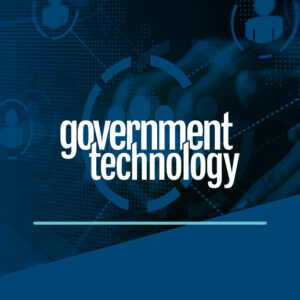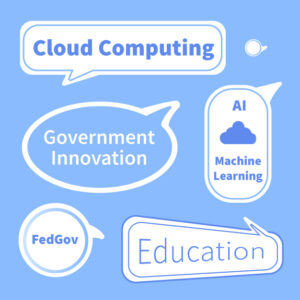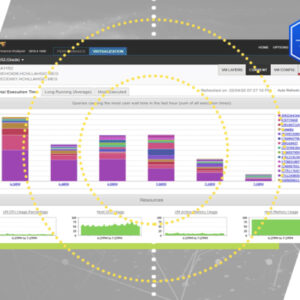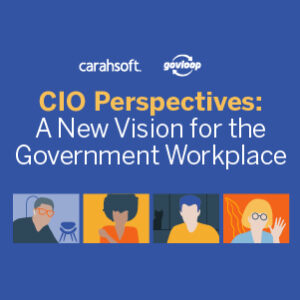Transition to Remote Work
It goes without saying that the switch to a predominantly “work from home” scenario has been quite the transition for most and has required much adaptation on both the human and technologic fronts. Many organizations had to scramble to set up the proper infrastructure and distribute the proper hardware to support a remote work environment. Depending on existing technology/structures and available resources, some transitions proved more challenging, while others ran more smoothly. However, even with the digital piece in place, a question remains: how can we keep the human experience intact in an increasingly tech-dominated world?
Factoring in the Human Element
Although we are living in a digital world, not all experiences are created equal, and it’s important to keep the audience in mind when creating content and delivering within any virtual scenario. While we have moved past the initial brunt of the ongoing global pandemic, according to the most recent Facts & Factors research study, “The Global E-learning market was projected at USD 144 Billion in 2019, is estimated to reach USD 374.3 Billion by 2026, and is predicted to increase at a CAGR of 14.6 % through 2026.” As such, trends showing an increased and continued adoption of eLearning overall are strengthened by ongoing remote work necessitated by the pandemic. eLearning has become the norm, and there are so many ways to deliver in that sphere, making it easier for all learning styles to be accommodated and include something for everyone. This can be in the form of a virtual classroom/web conferencing setting, self-paced content or quizzing created through content authoring tools, online activities, or even gamification and social learning. At the end of the day, it’s important to give people a chance to engage in a way that resonates with them.
Gamification for Incentivization
 One of the elements that can be incorporated to provide a more expansive digital learning experience is gamification, where users earn points for completing courses or activities. Gamification can foster friendly competition and incentivize learners to engage with available content. Users can see point values increase in real time and track their achievements, giving them bursts of encouragement from seeing their work move them up the virtual scoreboard. Normally, gamification systems are executed through a Learning Management System, used to deliver and track training. Settings can be adjusted accordingly to account for a range of content, activities, and point values.
One of the elements that can be incorporated to provide a more expansive digital learning experience is gamification, where users earn points for completing courses or activities. Gamification can foster friendly competition and incentivize learners to engage with available content. Users can see point values increase in real time and track their achievements, giving them bursts of encouragement from seeing their work move them up the virtual scoreboard. Normally, gamification systems are executed through a Learning Management System, used to deliver and track training. Settings can be adjusted accordingly to account for a range of content, activities, and point values.
Social Learning and Non-Traditional Engagement
A large part of training across the government, corporate, and education sphere often involves compliance training and requires concrete proof of completion from an assessment component. While these aspects of eLearning are necessary and important, they can also be complemented by adding more community-based engagement features, such as social learning, which usually entails a forum or social “feed” for users to post, comment, poll, and discuss in custom groups, small or large scope. The concept of social learning adds a friendly side to formal training and offers up another way for users to consume and process content alongside peers. With much of our day-to-day, in-person socialization still restricted within many work environments, options that mimic a more community-like feel have become crucial. Learners who are more engaged and who feel more welcomed in their respective digital environments are more likely to return.
Factors to Consider When Building an eLearning Environment
A few factors to consider when launching a more engaging eLearning experience include scope, training content, and goals, as well as time constraints and accessibility. In terms of the technology involved, usually a content authoring tool, whether it be PDFs, videos, or interactive content, is paired with a Learning Management System to deliver and track training for the full scope. Content can be tailored to appeal to various learning types and be delivered across multiple devices for ease of access. The “one size fits all” approach has shifted to pave the way for more customized education that plays an important role in increasing learn ability.
For more information, view the Adobe webinar series: 8-Part Adobe Digital Learning Webinar Series: Redefine Digital Learning Experiences.

 One place to improve on these experiences is an agency’s forms. While the website is often the first point of interaction on a customer’s journey, forms are the point at which the communication becomes a conversation. An
One place to improve on these experiences is an agency’s forms. While the website is often the first point of interaction on a customer’s journey, forms are the point at which the communication becomes a conversation. An  Giving Remote Workers Access to Resources They Need
Giving Remote Workers Access to Resources They Need Adapting to New Modes of Collaboration
Adapting to New Modes of Collaboration Workflow automation has been making life a lot easier during the pandemic. The Air Force, for example, has a lot of airmen who are working from home and aircraft manufacturers that had been on base who must now send forms for aircraft parts online. Also, the Air Force has to recruit new candidates without storefront offices or recruiting conferences where they give presentations.
Workflow automation has been making life a lot easier during the pandemic. The Air Force, for example, has a lot of airmen who are working from home and aircraft manufacturers that had been on base who must now send forms for aircraft parts online. Also, the Air Force has to recruit new candidates without storefront offices or recruiting conferences where they give presentations. With no immediate safe end to remote work for those who are able to do so, the Cybersecurity and Infrastructure Security Agency is also warning that poor cyber standards can put an organization at risk for a major attack. As such, an analysis report released on January 13th by CISA outlines security practices. The report indicates, “These types of attacks frequently occurred when victim organizations’ employees worked remotely and used a mixture of corporate laptops and personal devices to access their respective cloud services.” It is therefore recommended that organizations establish a solid baseline for remote work and use platforms that allow for customized security settings (Sara Wilson).
With no immediate safe end to remote work for those who are able to do so, the Cybersecurity and Infrastructure Security Agency is also warning that poor cyber standards can put an organization at risk for a major attack. As such, an analysis report released on January 13th by CISA outlines security practices. The report indicates, “These types of attacks frequently occurred when victim organizations’ employees worked remotely and used a mixture of corporate laptops and personal devices to access their respective cloud services.” It is therefore recommended that organizations establish a solid baseline for remote work and use platforms that allow for customized security settings (Sara Wilson). 6)
6)  Instead, workplaces can turn to cutting-edge facial recognition software—which, in the time of COVID, has been adapted to recognize masks as objects and can differentiate individuals both with and without masks. This technology can extract valuable information from the video feeds of existing cameras and can operate around the clock without the need for additional personnel.
Instead, workplaces can turn to cutting-edge facial recognition software—which, in the time of COVID, has been adapted to recognize masks as objects and can differentiate individuals both with and without masks. This technology can extract valuable information from the video feeds of existing cameras and can operate around the clock without the need for additional personnel. A secure perimeter was once an essential component of secure computing and a secure architecture. This essential component, however, has become seemingly irrelevant. What good is a secure perimeter when those who need the extra protection are so often outside it?
A secure perimeter was once an essential component of secure computing and a secure architecture. This essential component, however, has become seemingly irrelevant. What good is a secure perimeter when those who need the extra protection are so often outside it? Creating a Roadmap to Resilience
Creating a Roadmap to Resilience